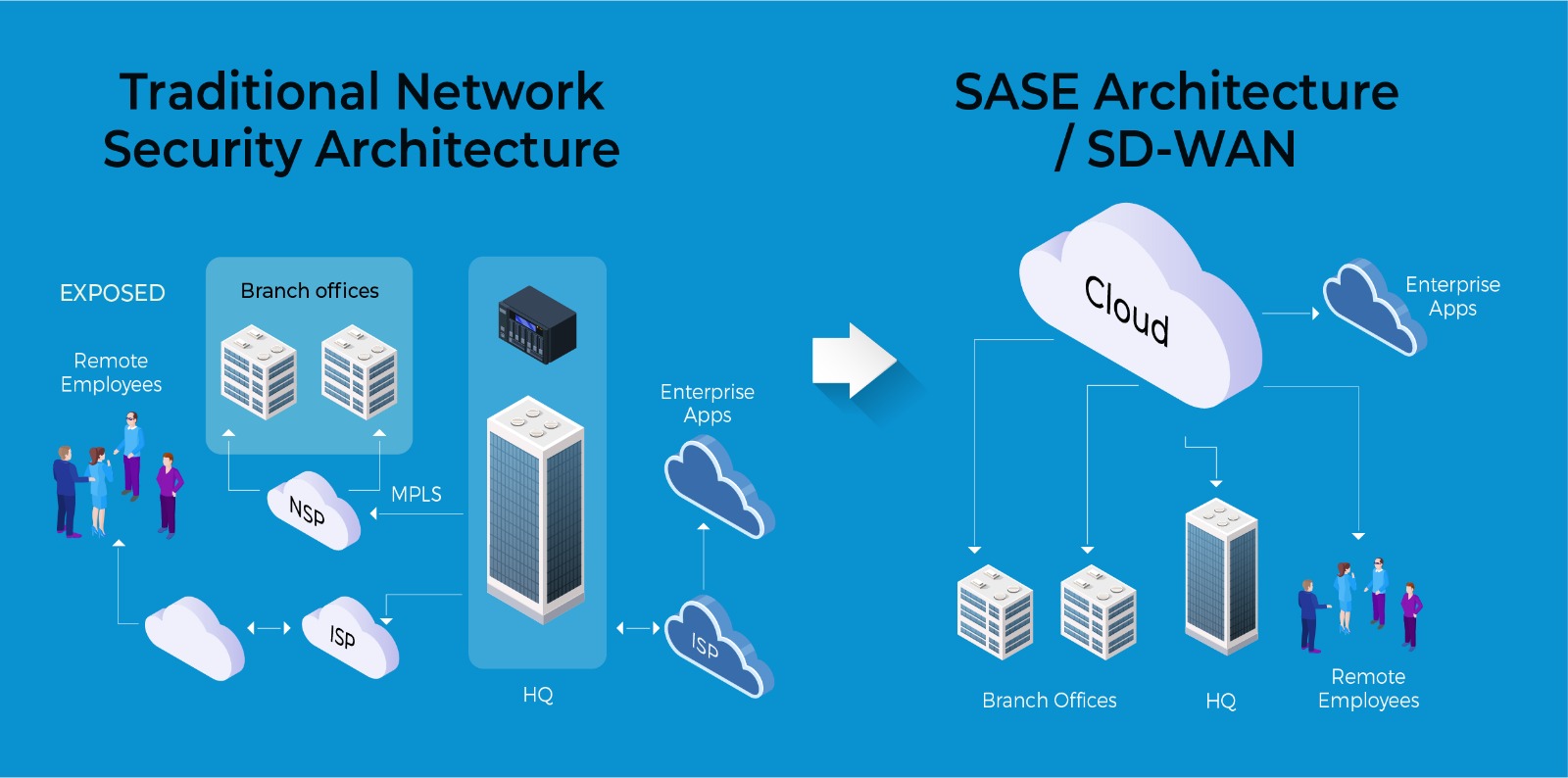
There are many paths to the top of the mountain.
– Ancient Proverb
Many paths lead to SD-WANs (software defined wide area networks). Just like the old proverb above, enterprise WANs everywhere are all headed toward a single destination. Of course with SD-WAN it’s not the perfect spot to gaze at the bright moon that we seek … it’s an edge device and routing technology that provide us with increased productivity and cost savings.
Here we explore the explosive growth of SD-WAN and the four scenarios that receive the greatest benefit from an SD-WAN investment. If your company is doing any of these things it is time to consider implementing an SD-WAN solution.
The 4 Best Use Cases for SD-WAN Adoption
1. Taking a Cloud-First Approach
If you’re focused on cloud adoption and leaning heavily toward the public cloud (moving applications to Office 365, Google Suite, and others) it’s time to look at SD-WAN. With the average bandwidth consumption increasing by 30% and traditional networks unable to handle the impacts, cloud migration is fueling network upgrades. SD-WAN’s capabilities facilitate a smoother ride to the cloud, making enterprises cloud-ready with:
- Secure local internet breakouts
- Direct connections to cloud service providers including cloud SLAs that guarantee performance to Amazon Web Services or other major providers
- On-demand controls and services help IT teams better utilize and optimize bandwidth, dialing up resources on the fly
2. Looking to Reduce the Cost of Network Services from Legacy Carriers
If your IT budget is under cost-cutting pressure or if you’re dissatisfied with the service provided by legacy carriers, it’s time to evaluate SD-WAN.
- Agility and Cost Savings: Transport-agnostic SD-WAN solutions offer flexible connectivity to help enterprises trade private connection at specific locations with more cost-effective public connectivity. SD-WAN makes network management easier too, enhancing productivity for IT teams. Service contracts with legacy carriers are known for stringent change fees. By comparison, SD-WAN services are often void of these fees. This makes connectivity both initially customizable and, perhaps more importantly, modifiable as time goes on.
- Superior Customer Experiences: Customer responsiveness is a primary advantage for the SD-WAN adopter. The software-defined technology infrastructure means providers spend less time managing their network systems and more time focusing on your outcomes.
3. Seeking to Ease the Burden of WAN Management and IT Complexity
If you’re looking to decrease network complexity, you should turn to SD-WAN. Under pressures of digital transformation, many executives are seeking ways to release internal teams from the responsibilities of IT administration so they can focus on strategic projects and emerging technologies. SD-WAN is the answer because it makes rigid infrastructures modular, simplifying administrative management and opening the door to automation. These basic benefits are widely advertised, but there’s really much more to the story.
The most exciting automation power comes not just when software-defined technologies are applied to edge architecture (in the case of SD-WAN) but when they’re applied to the entire IT infrastructure. The collective has a much greater impact. When SD-WAN edge devices are partnered with network services that are entirely software defined, every element and component of the total IT architecture easily programmable. This strategy multiplies your IT agility and maximizes your automation potential. In fact, it’s paving the way for the future.
SD-WAN and software-defined networks serve as the IT foundation and groundwork needed to create the self-modifying (intent-based) networks of tomorrow. Those who operate on software-defined network platforms (or partner with providers who do) will have the capabilities needed to apply intent-based policies and are more likely to be leaders in comprehensive network automation.
4. Growing Your Business or Expanding Branch Locations with Limited IT Resources
If you have an aggressive merger and acquisition strategy or your business is in a high-growth phase, take a look at SD-WAN. Expanding the network without expanding IT support staff has traditionally been a challenge, but SD-WAN is making growth sustainable and safer too.
- Transport-Agnostic Services: With SD-WAN the network edge is a flexible point of connectivity, allowing your new sites, applications, and user groups to gain access using whichever method makes the most sense for your business.
- Segmentation Made Easy: Network segmentation or segmented virtual network environments are leading tactics for safely joining your existing (known) network with a newly acquired (unknown) one. SD-WAN simplifies segmentation and can better facilitate any additional security policies and services that might need to be applied during the gestation period.
- Network Scalability: In addition, ancillary services offered with SD-WAN are key in ensuring rapid scalability to accelerate M&A processes. Security monitoring services are just one example. Others include network function virtualization (think routers, WAN encryption, firewalls and security services).

In Conclusion
Analysts and enterprises alike are bullish about SD-WAN adoption because they recognize its potential to address a wide swath of business needs. After all, analyst firms are reporting strong enterprise buying signals, and one recent study indicates that 70% of companies are either actively researching, piloting, or have SD-WAN in production. Numbers like that explain why many paths lead to SD-WAN and why those roads are becoming well-traveled.

